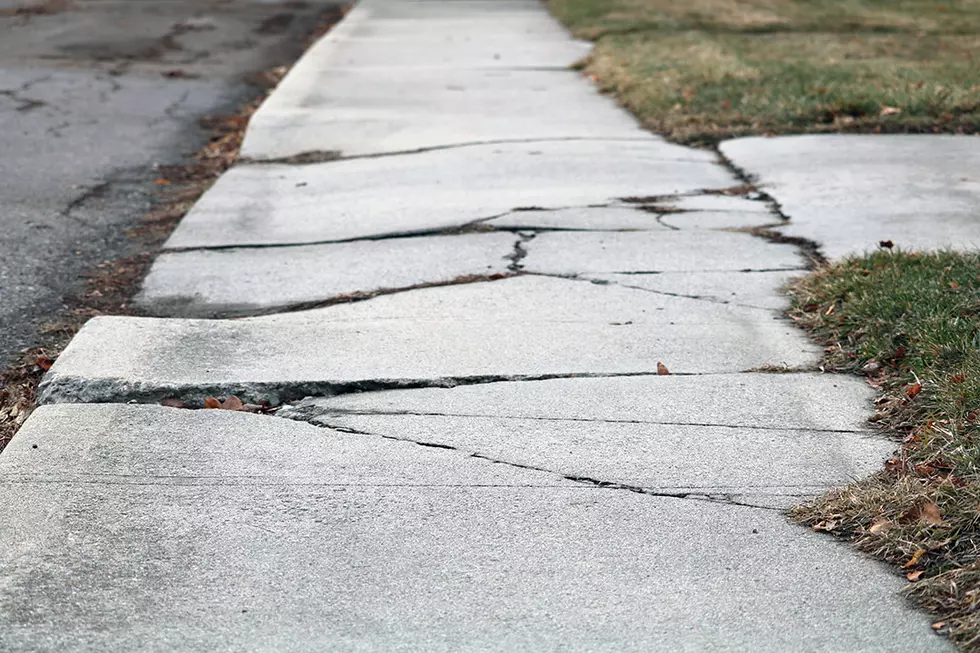
City of Missoula begins hunt for sidewalk solution as costs, needs mount
Saying it was time to rethink an age-old process, Missoula Mayor John Engen joined the City Council on Wednesday in calling for a review of the city's sidewalk replacement project, saying the costs have become too prohibitive to continue the status quo.
While most agreed the city's sidewalks are a vital source of safe transportation and an essential part of an equitable community, paying for them has become a challenge, resulting in steep bills for some homeowners.
“This is a function of time, process, money and expanse,” Engen said. “As times have changed, a time-honored way of doing business doesn't seem like the right way of doing business anymore.”
Engen killed a proposed Slant Street sidewalk project last week, saying the costs of seeing it through were too steep. He reaffirmed that pledge on Wednesday, saying it was time to come together in search of a new solution.
Finding a balance between the responsibility of homeowners and the greater cost to taxpayers may remain a work in progress. But advocates believe an equitable yet complete solution can be found.
“It may be an opportunity for us to look at priorities as a community,” Engen said. “What we may find at the end of this process is that our standards are exactly where we want them to be. The question then becomes how we want to pay for it, and if we change our model.”
Maintaining sidewalks and replacing sidewalks was the full responsibility of property owners up until 2012, when the city introduced a subsidy to help homeowners offset steadily creeping costs.
Last year, the city increased that subsidy even more, though replacement costs still stand beyond the reach of many homeowners, especially those on corner properties or with long exposure to the street.
“But it still didn't work this year,” Council member Gwen Jones said of the current system. “It's time to back it up and look again.”
Some homeowners have been confronted with crippling costs for sidewalk replacement projects, including Kathleen Kimble and her husband, William Fleischman. The couple recently received a city estimate north of $55,000 to replace the sidewalk outside their home, which sits on a corner lot in the Slant Street neighborhood.
The cost to the couple under the city's current subsidy was $38,000. While Kimble praised the city Wednesday for taking a step back, she urged it to find a realistic solution.
“As we look at prioritizing what really needs to be done, I'm still pretty nervous,” Kimble said. “We're both on Social Security and work little part-time jobs. This would alter my life forever if it were a crippling bill.”
While some property owners urged the city to find ways to address sidewalk replacement costs, others asked for a sidewalk in general. But even that request isn't new.
Last summer, as the City Council began looking at a sidewalk master plan, it was estimated then that more than $28 million in sidewalk projects remained outstanding in neighborhoods that didn't have them.
Those are often the lowest-income neighborhoods, leaving some on the council to raise questions of equity. Last year's debate also prompted former Council member Emily Bentley to say, “I don’t want to see us replace a somewhat adequate sidewalk ever again until the urban core is fully sidewalked.”
Still, the city moved forward to replace “adequate” sidewalks in the Slant Street neighborhood, much to the chagrin of those who had no sidewalks at all elsewhere in town.
“Sidewalks are essential for connecting neighbors to each other, but we have larger gaps in our sidewalk network,” said one Franklin to The Fort resident. “We need a plan for the long-term health of the entire community. That plan should start with respecting people's most basic and essential mobility needs.”
Jones, who is helping spearhead the search for solutions, called upon city staff to provide a breakdown in sidewalk spending, trends and needs. She also called for figures on labor and material costs and how they've changed.
Engen agreed.
“We may have reached the end of our successful road here,” Engen said of the city's current approach. “It gives us a chance to think about how we're doing business and proceed differently.”
